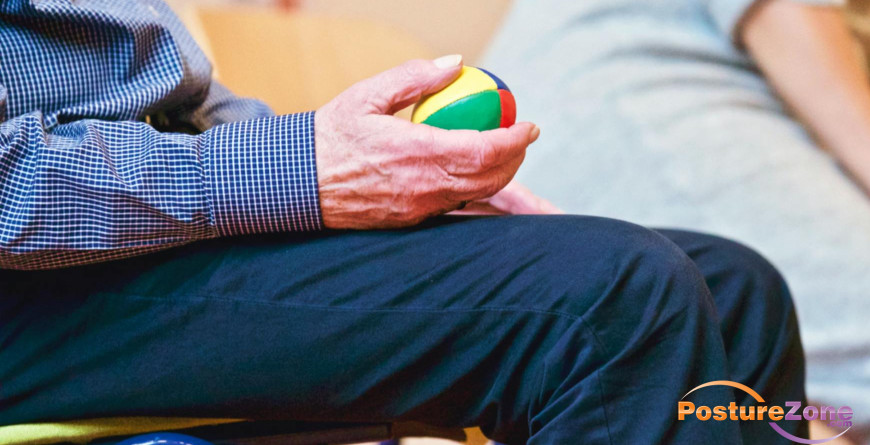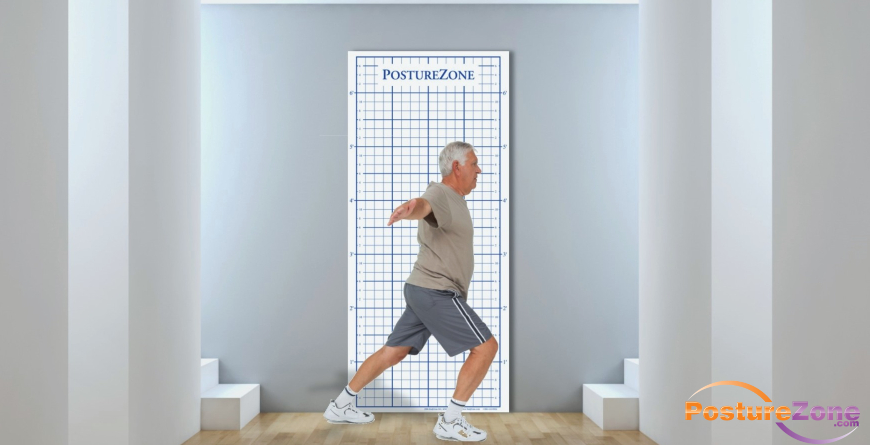The Role of Posture in Occupational Therapy
Posted by Renee North, CPT, CPEP on 2nd Jun 2023
Enhancing Occupational Therapy Outcomes through Posture Assessments
Occupational therapists understand the significant impact that posture has on individuals' overall well-being and ability to engage in meaningful occupations. Posture plays a vital role in various conditions commonly treated in the profession, including musculoskeletal conditions, neurological disorders, developmental disorders, mental health conditions, geriatric conditions, and work-related injuries. By incorporating posture assessments, also known as posture analyses or postural assessments, we can gain valuable insights into a clients' postural alignment, identify potential issues, and tailor interventions to optimize outcomes.
1. Musculoskeletal Conditions
Posture assessments are essential in evaluating individuals with musculoskeletal conditions such as arthritis, fractures, or chronic pain. By conducting a thorough posture analysis, we can identify postural deviations, muscular imbalances, and joint misalignments that may contribute to pain or functional limitations. A posture grid, or posture chart, provides a visual representation of these deviations, aiding in treatment planning and monitoring progress over time. Addressing postural imbalances through targeted interventions, including therapeutic exercises, ergonomic modifications, and postural retraining, can help alleviate symptoms and improve overall function.

2. Neurological Conditions
Posture assessment is crucial when working with individuals who have neurological conditions like stroke, traumatic brain injury, Alzheimer's, or Parkinson's disease. Changes in posture, balance, and coordination often accompany these conditions, impacting functional abilities. By utilizing a posture assessment grid to take an image, we can quantify postural changes and identify areas of improvement. This information guides the selection of interventions such as balance training, core stabilization exercises, and adaptive equipment to enhance postural control, stability, and mobility.
3. Developmental Disorders
For children and adults with developmental disorders such as autism spectrum disorder or cerebral palsy, posture analysis plays a vital role in understanding the impact of postural alignment on functional performance. A posture grid or chart helps document postural deviations, such as scoliosis or asymmetrical alignment, enabling us to develop individualized intervention plans. Therapeutic strategies may include postural training, sensory integration techniques, and adaptive equipment to improve posture, fine motor skills, and overall independence.

4. Mental Health Conditions
Postural assessments are valuable in mental health settings, where individuals may experience conditions such as depression, anxiety, or schizophrenia. Poor posture can contribute to decreased energy levels, reduced engagement in activities, and compromised self-esteem. Through a posture analysis, we can assess how posture influences mood, body image, and social participation. Interventions may focus on promoting body awareness, postural corrections, and integrating movement into daily routines to enhance overall well-being.
5. Geriatric Conditions
Posture assessments are integral to caring for older adults with conditions such as dementia, osteoporosis, or balance disorders. These conditions can lead to postural changes, decreased bone density, and increased fall risks. A posture assessment grid enables us to identify postural asymmetries, stooped posture, or other age-related changes. Interventions may include exercises to improve posture, environmental modifications, and education on fall prevention to enhance safety and maintain independence.
6. Work-Related Injuries
In cases of work-related injuries, posture assessments are crucial for evaluating the impact of occupational demands on postural alignment and function. Through a posture analysis or assessment, we can identify workplace ergonomics issues, postural stressors, and potential contributors to injury. A posture grid or chart helps us visualize these factors and design interventions such as ergonomic modifications, postural education, and adaptive strategies to promote optimal work performance and prevent further injury.
Posture Assessment in an Occupational Therapy Practice
One way to introduce posture evaluations (statice posture, dynamic posture, one leg balance, balance assessment, gait assessment) into an occupational therapy practice is by incorporating them as part of the initial evaluation process, alongside other assessments. This allows the OT to gather comprehensive information about the clients' physical well-being and functional abilities, providing a holistic approach to treatment planning.

It's important to note that posture assessments can be a billable service and are often covered by insurance. By documenting and coding these assessments appropriately, an OT can ensure reimbursement for the time and expertise invested in conducting them. This recognition of posture assessments as a reimbursable service highlights their value in the eyes of insurance companies and emphasizes their significance in delivering comprehensive and evidence-based care.
Posture pictures taken in front of a posture chart holds a unique appeal and resonates with people for several reasons. Firstly, visual representations provide clients with a tangible and easily understandable way to assess and track their progress over time. When they see their posture in a picture or chart, it becomes more evident how it impacts their overall well-being and functional performance. This visual feedback helps individuals actively engage in their own rehabilitation process and motivates them to make positive changes.
Moreover, posture pictures create a shared language between occupational therapists and clients. These visual aids simplify the communication of postural deviations and allow us to educate our clients about the relationship between posture and their specific conditions. Clients can better understand the impact of postural habits on their daily lives, encouraging their active participation in treatment and self-management.
In summary, introducing posture assessments into an occupational therapy practice is a straightforward process that can yield significant benefits for our clients, as well as ease of documentation, insurance reimbursements, and multi disciplinary team communications. By recognizing the billable and insurance reimbursable nature of analysis, we can ensure their inclusion in our services. Utilizing posture grids provides a powerful tool for communication, education, and motivation, fostering meaningful engagement and promoting positive outcomes for our clients.


